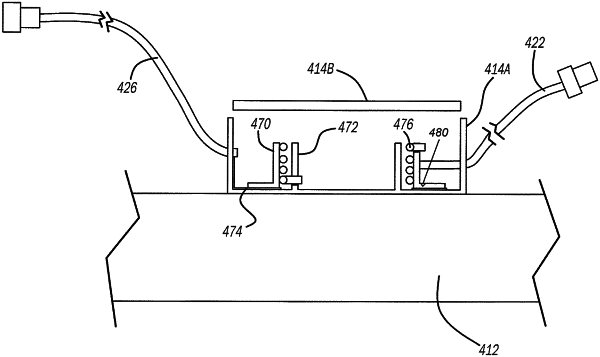| CPC H04M 1/04 (2013.01) [H01R 13/72 (2013.01); H01R 25/003 (2013.01); H02J 7/00 (2013.01); H02J 7/0045 (2013.01); H02J 50/005 (2020.01); H02J 50/10 (2016.02); H04B 1/3883 (2013.01); H04B 1/3888 (2013.01); H04B 5/0037 (2013.01); H04B 5/0075 (2013.01); H04M 1/0262 (2013.01); Y02B 40/00 (2013.01)] | 20 Claims |

|
1. A device for charging a portable electronic device having a battery, the device comprising:
a housing having a first surface configured to adhere to the portable electronic device and a second surface opposite the first surface;
a first cable having a first end and a second end, the second end configured to connect to a power source;
a multi-directional inductive charger formed in the housing, the multi-directional inductive charger in communication with the first end of the cable, the multi-directional inductive charger having a first coil and a second coil, the first coil structured to emit power in a first direction and charge the battery of the portable electronic device, the second coil structured to emit power in a second direction and charge a battery of an accessory positioned adjacent the second surface;
wherein the battery of the portable electronic device is capable of being charged when the second end of the first cable is connected to the power source; and
wherein the housing defines a cavity configured to store the first cable within the cavity.
|